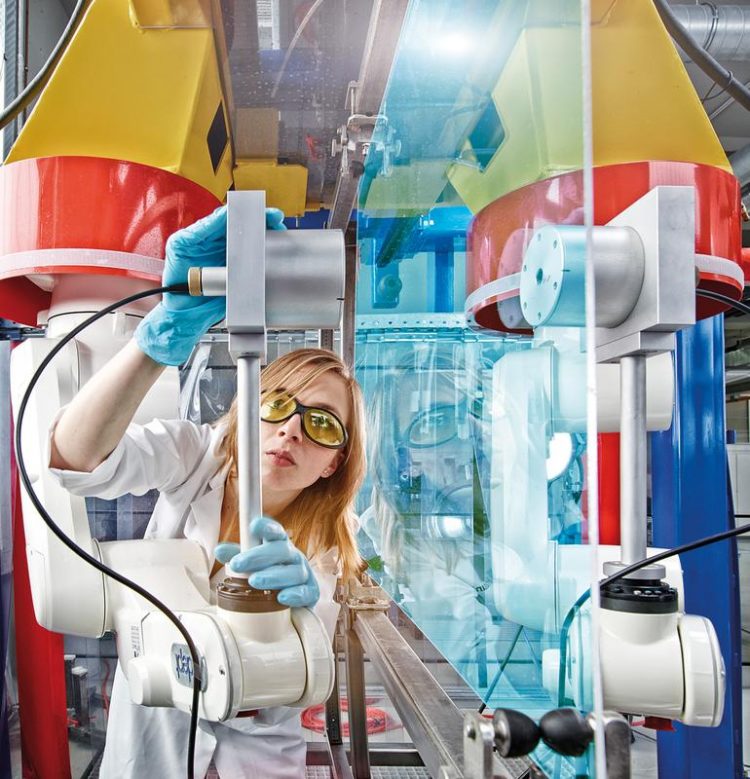Purity Characterization of Aluminium Melts by Ultrasonic Scattering Measurements

AIR-COUPLED ULTRASOUND INSPECTION Fraunhofer IZFP/Uwe Bellhäuser
The use of Aluminium cast materials in industrial applications has a rising trend in Germany. One reason is the low density combined with the high specific mechanical strength. Another reason is the good machinability and corrosion resistance of this material group.
The growing trend towards lightweight construction results in components made of aluminium casting alloys with wall thicknesses getting thinner and thinner. That’s the reason why non-metallic inclusions are tolerated less and less. Most frequently oxides and carbides occur as such non-metallic inclusions.
Those impurities in the manufacture of castings are the most common defects, which entail costly cleaning methods to avoid defective goods. Therefore, a test device to detect impurities in the form of oxides with 20-300 µm in diameter is now being developed at the Fraunhofer IZFP. Characterizing the purity of the melt, the manufacturers can apply a specific cleaning.
At the WCNDT first results from measurements on a model suspension consisting of water and PMMA spheres will be discussed and presented. The advantage is that in a simple manner defined particles can be introduced and difficulties, caused by high temperatures, are bypassed first.
One important step was the determination of the optimal test frequency with knowledge of the ultrasonic scattering theory. Numerical calculations from analytical solutions of the scattering theory and measurement results could be compared.
Thus we will be able to determine the particle size and quantity from ultrasonic amplitude signals. Taking account of different melt qualities we are able to measure with two different methods.
The first one is suitable for melts with an impurity of more than 0.05 Vol% and is based on a multiple scattering model.
To detect less than 50000 particles/kg aluminium melting a single scattering approach is used. For further tests in aluminium melts the development of a wave guide has to be done.
Media Contact
All latest news from the category: Materials Sciences
Materials management deals with the research, development, manufacturing and processing of raw and industrial materials. Key aspects here are biological and medical issues, which play an increasingly important role in this field.
innovations-report offers in-depth articles related to the development and application of materials and the structure and properties of new materials.
Newest articles

New SPECT/CT technique shows impressive biomarker identification
…offers increased access for prostate cancer patients. A novel SPECT/CT acquisition method can accurately detect radiopharmaceutical biodistribution in a convenient manner for prostate cancer patients, opening the door for more…

How 3D printers can give robots a soft touch
Soft skin coverings and touch sensors have emerged as a promising feature for robots that are both safer and more intuitive for human interaction, but they are expensive and difficult…

Oxygen vacancies mediated ultrathin Bi4O5Br2 nanosheets
… as efficient piezocatalyst for synthesis of H2O2 from pure water. As an important chemical raw material, hydrogen peroxide (H2O2) is widely applied in various aspects of industry and life….





















